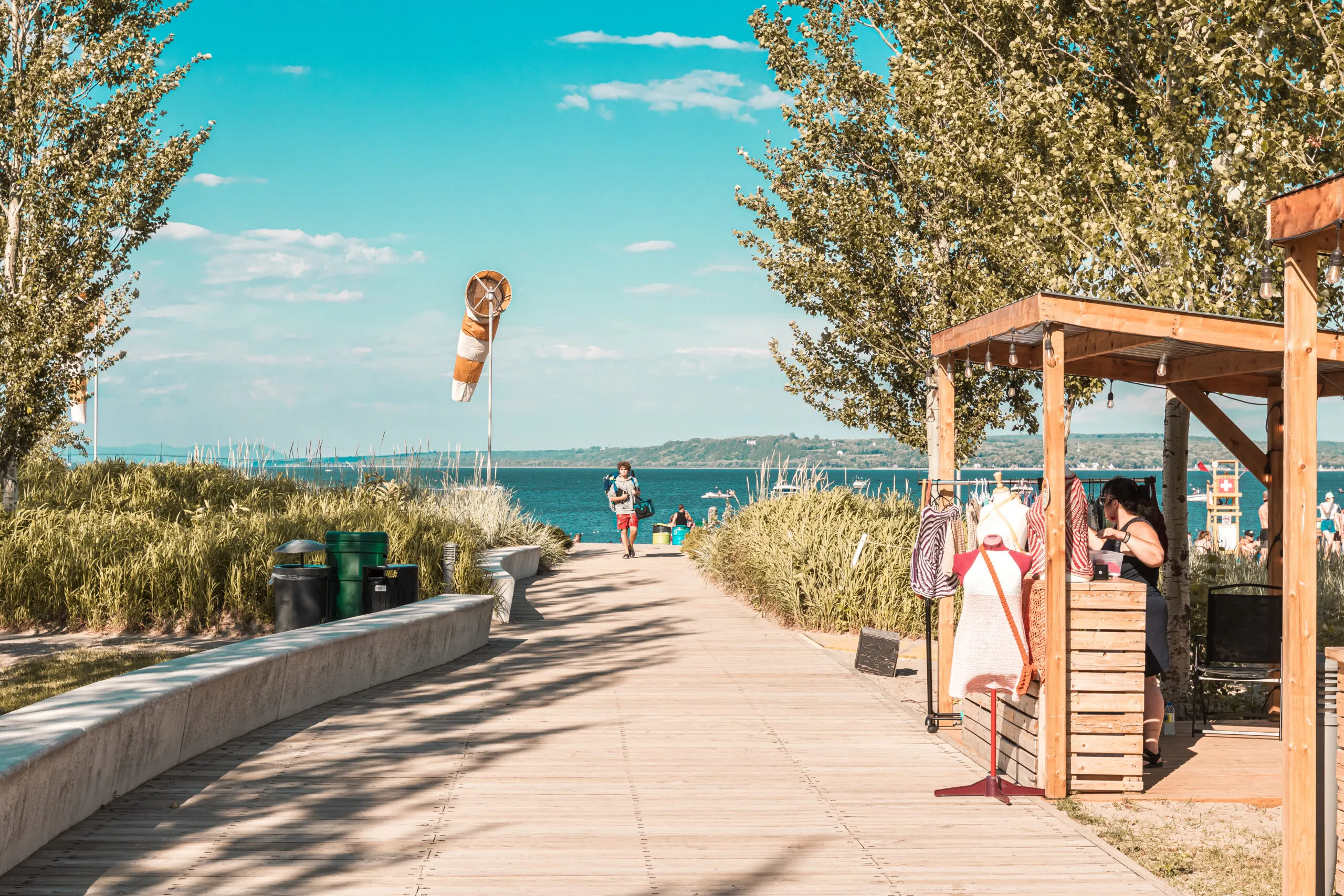I remember standing at the wharves one sunny morning, watching a family set up their bicycles, a young boy run through the fountains, and a couple stop to admire a cruise ship. That day, the Port was a place of arrival and departure, relaxation and exploration. Quite simply, it was alive.
Since taking the helm at the Port of Québec, I’ve learned—and marvelled at—the extent to which our Port is also a place of social, cultural, and recreational experiences. It’s something of a hidden treasure, but it deserves to be brought into the light and fully shared.
Places to enjoy life
What we call tourism (or leisure) goes far beyond physical structures and seasonal opportunities. It’s a breath of fresh air, a state of mind, a way of inhabiting the river and identifying with it. It means bringing wharves, riverbanks, and port facilities into the spotlight and turning them into places to connect and enjoy life. Accessible spaces where you can walk, paddle, celebrate, and contemplate. Spaces where the river is shared and explored, ebbing and flowing with the tides and the seasons. Spaces where people can truly come alive.
Just think of the Baie de Beauport, which over the years has become an urban beach where athletes, families, walkers, and river lovers converge.
Then there’s the Agora, the open-air amphitheatre that brings summer nights to life with shows where the river itself is the backdrop.
And the Oasis, a lively, friendly place that invites everyone to swim right in the heart of the city, in the heart of the Port.
And of course there’s also La Cale, a riverside patio where heritage meets summer fun and people can enjoy a drink, eat with the family, and watch the ballet of ships on the water.
Not to mention Strøm Spa, a soothing haven where guests can relax and rejuvenate right on the river, with nature and the beautiful surroundings taking centre stage.
And let’s not forget the wintertime, when the Village Nordik and the Discoglace turn the Port into a festive winter playground.
All these places have one thing in common: they make the Port accessible, lively, and deeply rooted in the community.
Sustainable tourism: anchored in our DNA
To open the Port is to welcome people. To welcome visitors from abroad who are discovering the river for the first time, as well as locals who are proudly getting to know it all over again. We want this kind of tourism to reflect our image: responsible, respectful, and rooted in the region.
That means working closely with our cultural partners, our artisans, and our local producers. It also translates into concrete investments to improve access, green our spaces, and create experiences that resonate with our values: authenticity, accessibility, and pride.
The Port isn’t looking to be the star of the show. It’s looking to make connections. To offer meaningful experiences. To make sure everyone leaves feeling like they’ve been part of something vital—something both memorable and personal.
A neighbourly port
This openness is far from passive. It requires dialogue, listening, and presence. After all, “I welcome and stand watch” is more than a motto—it’s a commitment. To welcome means to open our arms. To stand watch means to keep a watchful eye and listening ear. It’s about protecting what makes our Port so rich and unique: the beauty of the location, the tranquility of the neighbourhoods, the vitality of the life that unfolds here. It’s a way of inhabiting the Port respectfully, consistently, and vigilantly. Because a port isn’t just a logistical hub: it’s a place for living and sharing. A place to preserve.
That’s why we take concrete steps to control activities, limit nuisances, and allow us to coexist peacefully with our neighbours. Our recreation and tourism areas aren’t isolated bubbles: they’re part of a long-term vision driven by community.
Seeing the river in a new light
Over the course of our conversations, one idea has come up time and time again: when you visit the Port’s public spaces, you discover another facet of its identity. You stop seeing it as simply a place of transit and instead recognize it as a vibrant, inhabited space made for people. It’s a port that brings people together, connects riverbanks, and forms bonds. A port that’s well worth discovering, getting to know, and making your own.
